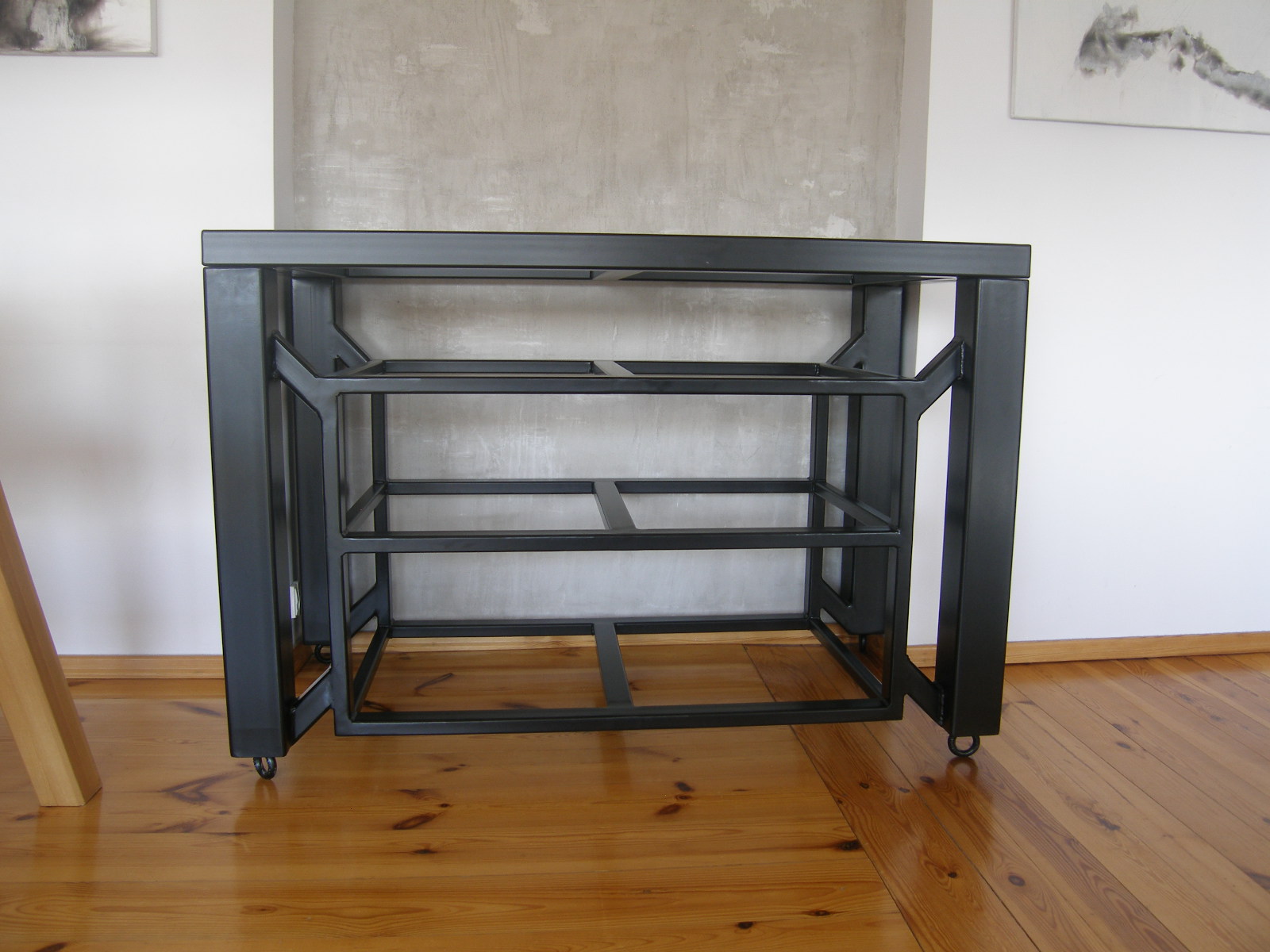Rerurn to Romy the Cat's Site
In the Forum: Audio Discussions
In the Thread: Mastodont DIY Rack: Wall Mount?
Post Subject: State of the fartPosted by N-set on: 7/25/2013
fiogf49gjkf0d
Paul, thanks! I'm quite happy to hear I'm not the only one fighting vibrations
in a seemingly dead structures...It takes a lot of thinking to properly isolate and damp vibrations.
Not unlike in the complementary problem: reproduction of the audio range. Just like in the latter
there is no universal device capable of reproducing the whole spectrum equally well, here too
there is no one single element or even a strategy decoupling all 6 vibrational axes in the all interesting freq.
Here is my big mistake---the 1st version of the rack:

The inspiration is obvious--RixRax Hoodoo. My poor imitation shaked like a gelly even with a gentle touch!
I suspect the inner, sand loaded cage acted like a big mass, suspended on 4 springs (diagonal members)
terminated at the columns. This has been a big lecture for me: stupid, indiscriminative mass loading is a
road to nowhere. It lowers fres., alright, butt it also lowers damping! How could I, a phisicist by profession,
have overlooked that!? What I got was a gelly, shaking at some few Hz, I guess perfectly in the 3-5Hz resonant range
of the pneumatics I plan to use. So instead of giving the pneumatics (my main ULF decoupling element) a solid
base to work against, it would inject it's own vibration. That's why I've cut the inner cage out and bound
the columns with 10x8cm 4mm thick, perlite (lighter than sand!) loaded profiles. Adding stiff members greatly
increased rigidity, controllig mass keept fres. and damping high enough to be (hopefully, I haven't measured that)
comfortable for the pneumatics. It all still shakes as a whole at ~1-2Hz when strongly hit,
which I attribute to the spikes (create inverted pendulum with a high mass on top...fucking spikes).
Decoupling from the floor: electronics cage I plan to put on the pneumatic suspension.
The TT table will have the neumatics on top of the columns. To the floor it's interfaced with spikes...I just could not
workout a better solution now, giving a nice leveling feature on uneven surfaces.
If I manage to fish a second 4.5cm thick slate slab, I'll put it below the rack and probably change the spikes
to my own idea of rotary bearings.
Cheers,
N-set
Rerurn to Romy the Cat's Site